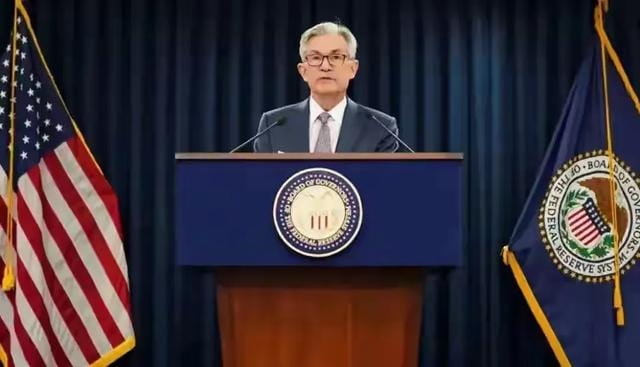Recently, the financial world has been very lively, and everyone is discussing the Fed's sudden "comeback". A few days ago, everyone was predicting that the Fed would continue to cut interest rates, but it gave us a big surprise. This unexpected signal caused a shock in the global market, and investors began to seek answers. Today, let's talk about this incident that caused an uproar.

Let's talk about the background of the Federal Reserve first. As one of the most important central banks in the world, every move of the Federal Reserve can trigger a chain reaction in the global economy. Whether it is a rate cut or a rate hike, it will affect the hearts of countless financial institutions and investors. In September this year, the Federal Reserve announced a 50 basis point rate cut. As soon as this decision came out, it immediately triggered a global interest rate cut trend. American friends quickly followed suit, and the European Union, Canada and other countries also responded, and the trend of economic slowdown that seemed to have been alleviated.
But the good times didn't last long. Not long after, the Fed began to "change its face". Just when everyone thought that interest rate cuts would become the norm, the non-farm payrolls data suddenly exceeded expectations. As everyone went back and forth, they were all wondering: What happened to the US economy? Is the job market really so hot? A careful analysis shows that there is a 60% error between this unexpected data and market expectations, which sounds crazy! Faced with such data, many people began to wonder if the Fed was determined to end the trend of interest rate cuts?
Soon after, the Consumer Price Index (CPI) was released. This data also surprised the market and exceeded expectations. With it came growing speculation that the Federal Reserve might no longer cut interest rates on a large scale and change its previous policy path. This change made many investors feel uneasy, fearing that they had stepped on a landmine.
At this time, the market reaction was extremely intense. Many investors began to adjust their positions and change stocks, trying to lock in profits or reduce risks. The stock market once experienced violent fluctuations, and many sectors that were originally optimistic fell to the bottom in an instant. At the same time, safe-haven assets such as gold ushered in a rise, and investors flocked in to find a safe haven. This sharp reaction also indirectly shows how sensitive the market is to the uncertainty of the Fed's policy.
Moreover, this "rebound" action not only affected the US market, but also caused the global market to start adjusting. Asian and European stock markets were affected. For a time, everyone was speculating on what the Fed would do next. Every time economic data was released, it became a worrying moment for the market.
So why did the Fed choose to release such a signal at this time? Analysts pointed out that perhaps this is because the Fed has received clearer signs of economic recovery. As the economy gradually emerges from the shadow of the epidemic, unemployment rate drops, and consumer confidence increases, the Fed may feel that large-scale interest rate cuts are no longer suitable for the current economic environment. In the long run, they also hope to maintain inflation at a reasonable level, and excessive interest rate cuts may lead to rising inflationary pressures.
In addition, investors have also begun to discuss future interest rate policies. Some experts suggest that at this critical moment, it is particularly important to pay attention to every piece of news from the Federal Reserve. After all, they will directly affect asset allocation strategies. Even in this frequently changing market, it is crucial to remain rational and calm.
Faced with such a situation, many investors may feel confused. Many people have begun to re-examine their investment portfolios and consider how to find suitable opportunities in the ever-changing market. Smart investors will take the opportunity to make arrangements and look for industries that may be affected by policies to achieve profits.
Of course, it is still important for ordinary investors to pay attention to market dynamics and data releases. "Understanding" economic data, whether it is non-agricultural employment data or CPI data, is the key to understanding the direction of the Fed's policy. In addition, investors also need to consider various market factors from multiple perspectives, such as the global economic situation, geopolitical dynamics, etc., to provide more reference for their investment choices.
The Fed's "comeback" incident reveals the importance of economic policies in dealing with complex market environments. The turmoil in the financial market is always unpredictable, and the role played by the Fed is even more crucial. Every policy adjustment may become a market vane, and investors need to stay focused and sharp.
In short, the Fed's decision on the direction of the economy not only concerns the United States, but also has a profound impact on the global economic landscape. In this ever-changing market, only by grasping information and adjusting strategies in a timely manner can we stand firm in the huge waves. For every investor, staying calm, sharp and taking appropriate actions is the best way to deal with future market fluctuations.
The financial market is like a war without gunpowder, full of opportunities and challenges. After experiencing this "backstab" incident, perhaps everyone has some thoughts. Can we seize more opportunities in the future investment path? This depends not only on market changes, but also on our wisdom and decision-making. Let us look forward to how the Federal Reserve will lead the market next. Let us wait and see.





